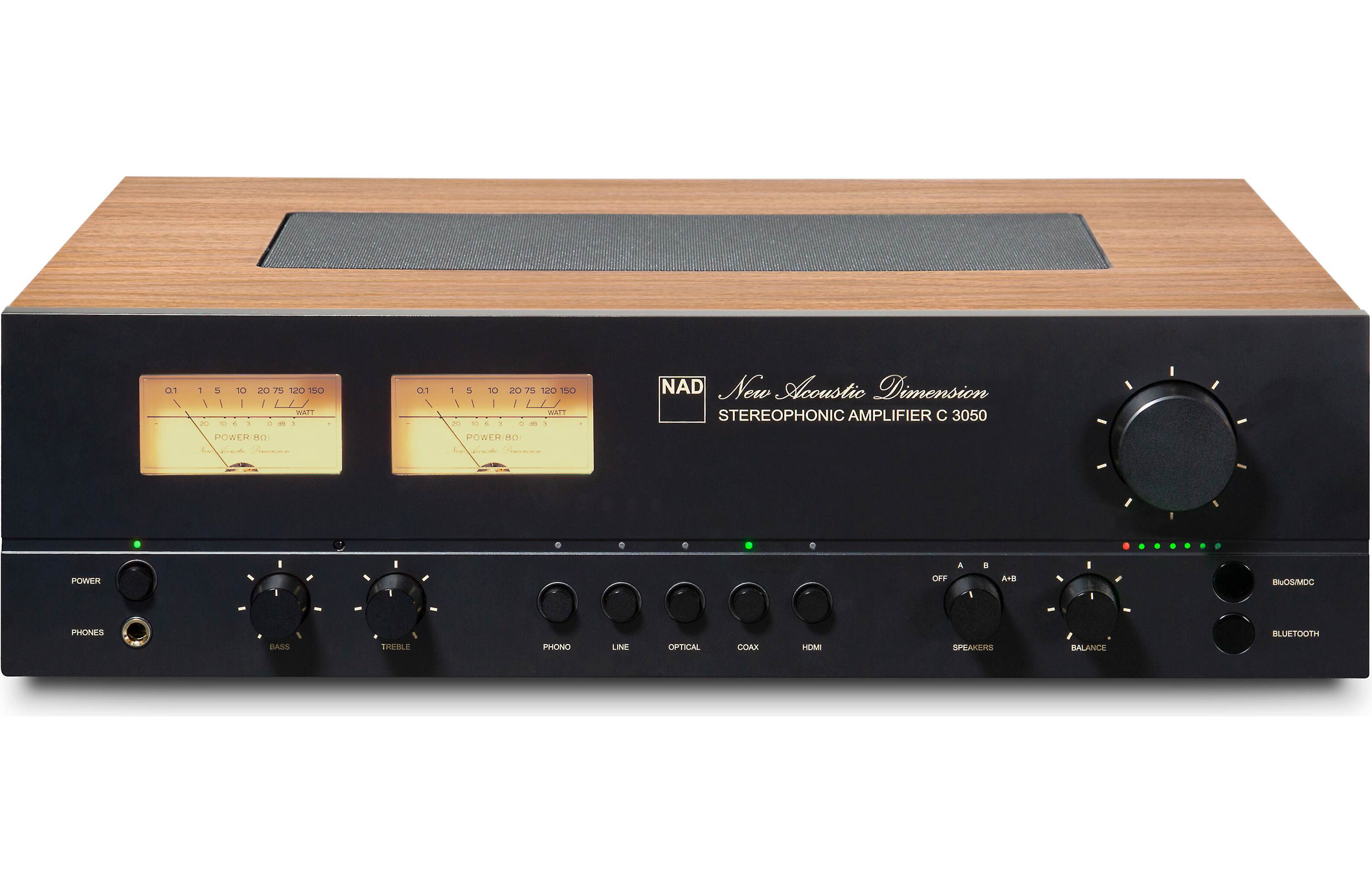Foreword / YouTube Video Review
This item was loaned to me by NAD. I was not paid nor given anything in return for this review. If, after reading this review, you find your are interested in purchasing this item then please consider using the below affiliate link. This link earns me a small commission at no additional cost to you.
All my reviews are done on my own time with great care to give you all the best set of data and information I can provide in order to help you make a well-informed purchase decision. I offer this for free to all who are interested. In return, if you want to support this site please see the bottom of this review for ways you can help. It is greatly appreciated.
The review on this website is a brief overview and summary of the objective performance of this processor. It is not intended to be a deep dive. Moreso, this is information for those who prefer “just the facts” and prefer to have the data without the filler. The video below has more discussion with respect to the technical merits and subjective notes.
Information and Photos
Some specs from the manufacturer are below and full specs can be found here.
- Features:
- 100 watts x 2 channels into 8 or 4 ohms (20-20,000 Hz) at 0.03% THD
- 4-ohm stable for use with a wide range of speakers
- high-performance HybridDigital Universal Class D (UcD) amplifier design
- low-jitter Texas Instruments TI PCM5242 DAC for high-performance playback of digitally connected sources such as a CD player
- MDC2 BluOS module pre-installed for flexible network streaming
- Bluetooth 5.0 with aptX® HD
- front-panel illuminated VU meters
- independent built-in high-output headphone amplifier
- bass and treble control knobs
- push-button source selection
- speaker knob lets you select A, B, A+B, or off
- remote control
- BluOS-D module features:
- BluOS compatibility for expanding your system with Bluesound multi-room wireless speakers and components
- connects to your home network via wired Ethernet or Wi-Fi for music streaming
- free BluOS controller app for iOS®, Android™, Windows®, and Mac® OS X®
- support for over 20 streaming services including Spotify, Pandora, Deezer, TIDAL, Qobuz, Amazon Music, and more
- support for hundreds of free internet radio stations
- Apple® AirPlay® 2 lets you stream easily from an iPhone® or iPad®
- compatible file types: MQA, MP3, AAC, WMA, OGG, WMA-L, FLAC, ALAC, WAV, and AIFF
- built-in two-way Bluetooth with high-quality aptX HD audio coding
- stream to the C 3050 from your phone, computer, tablet, or other device with Bluetooth
- stream from the C 3050 to Bluetooth headphones or speakers
- Dirac Live room correction
- calibrated microphone included for Dirac setup
- Connections:
- HDMI eARC port for playing TV sound
- 2 digital audio inputs (1 Toslink optical/1 coaxial)
- 2 stereo RCA audio inputs, including a phono input (for use with a moving magnet cartridge)
- stereo RCA preamp output for connecting a separate amplifier
- stereo RCA “main in” input for connecting a separate preamplifier and using the C 3050’s amplifier section only
- mono RCA subwoofer output
- IR input and 12-volt trigger output
- 1/4" front-panel headphone jack
- 2 pairs of binding post speaker connectors for A and B speakers
- detachable power cord
- Other specs:
- signal-to-noise ratio: 95 dB
- 17-11/16"W x 5-1/16"“H x 14-5/16"D
- weight: 22 lbs.
- warranty: 2 years
As of this writeup, the MSRP is approximately $1799 USD for the BluOS/Dirac Live version of this amplifer. Without these two features the price is $1399.
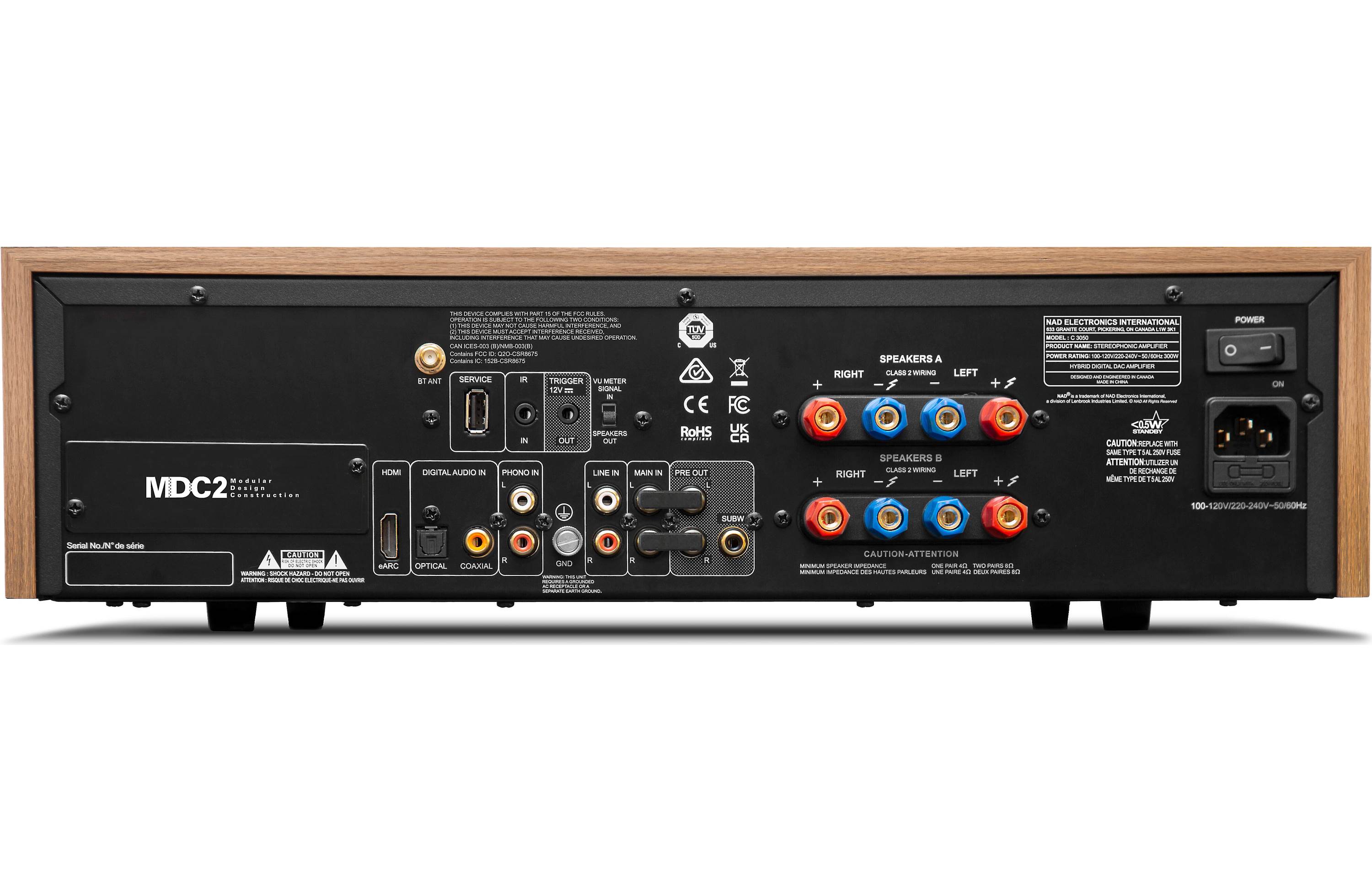
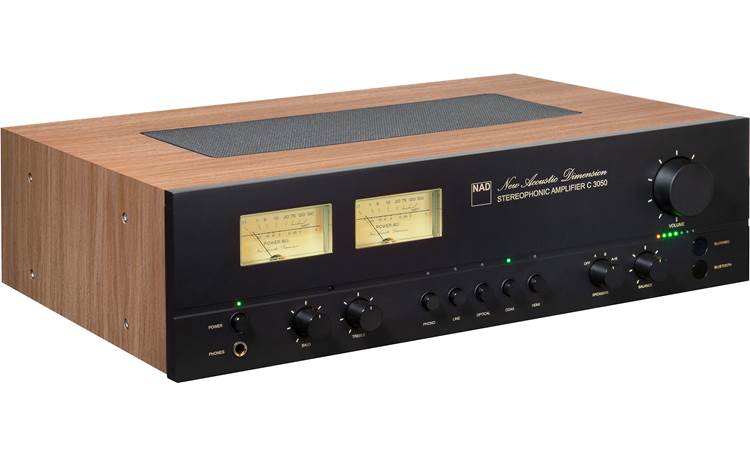
Test Setup Information:
Testing was conducted using the Quant Asylum QA402.
- Warmup: Unit was provided pink noise with an output of 1 watt into a 4-ohm load for 10 minutes.
- Test Bandwidth: 22.4kHz (48 kHz Sample Rate) (unless otherwise stated)
- FFT Size: 64k (unless otherwise stated).
- Input to DUT: Phono (RCA).
- Output from DUT: Phono (RCA).
- Volume/Gain: Max.
- DSP Settings: None Unless Otherwise Specified.
- Tests were run at 4 and 8-ohm loads. Both channels loaded. However, due to server space costs, results published here are based upon the 4-ohm testing (unless otherwise noted).
- Beyond the static loads mentioned above, Reactive Loads were also used for testing and noted. Both a “simple” and “complex” load. These are designed to emulate a true speaker load without risking damaging a real speaker or deafening myself to test tones from a real speaker. The impedance sweep of these loads are provided below.
Reactive Loads Impedance
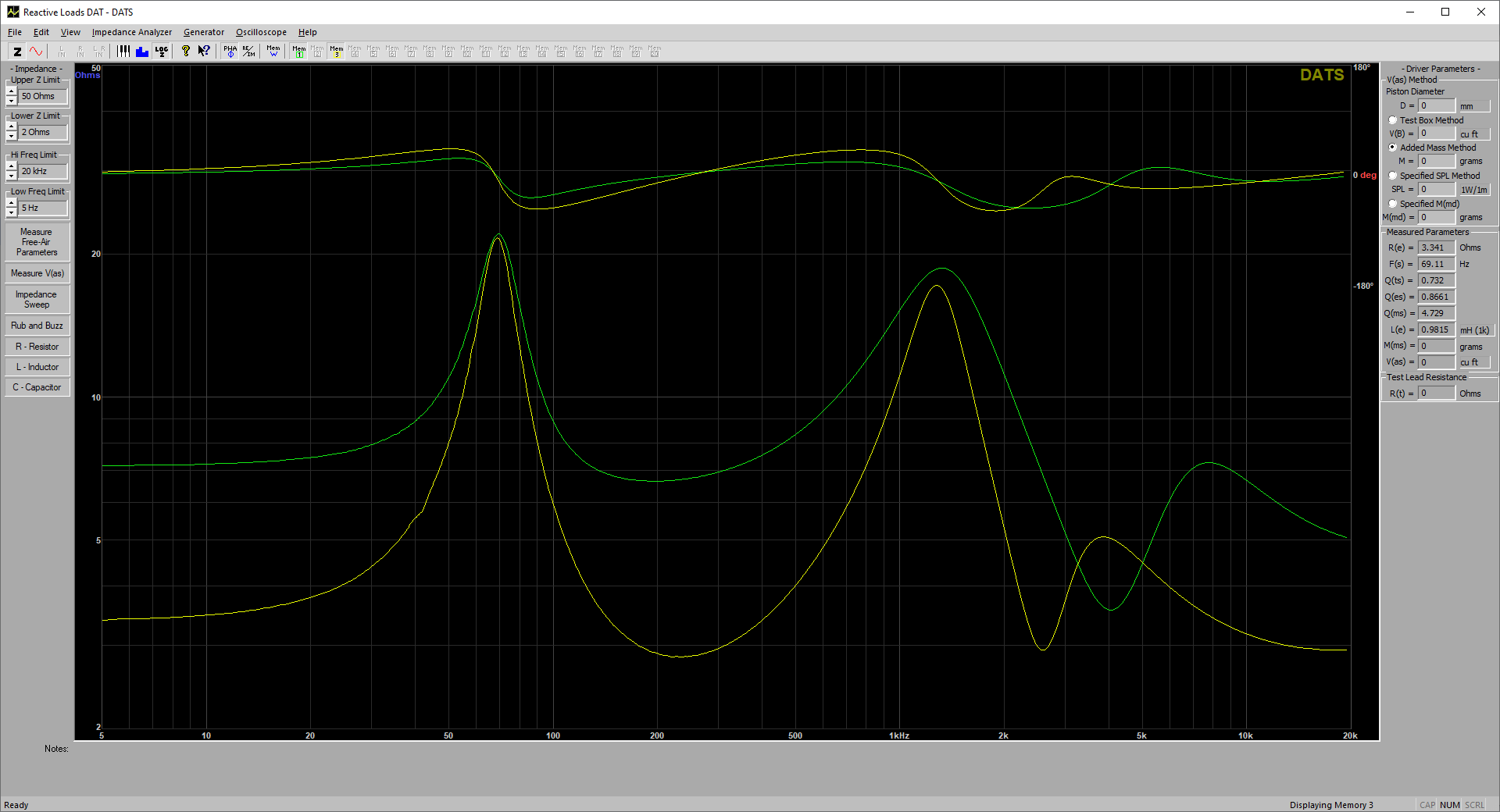
Frequency Response
Response shows practically zero load dependency of the speaker outputs.
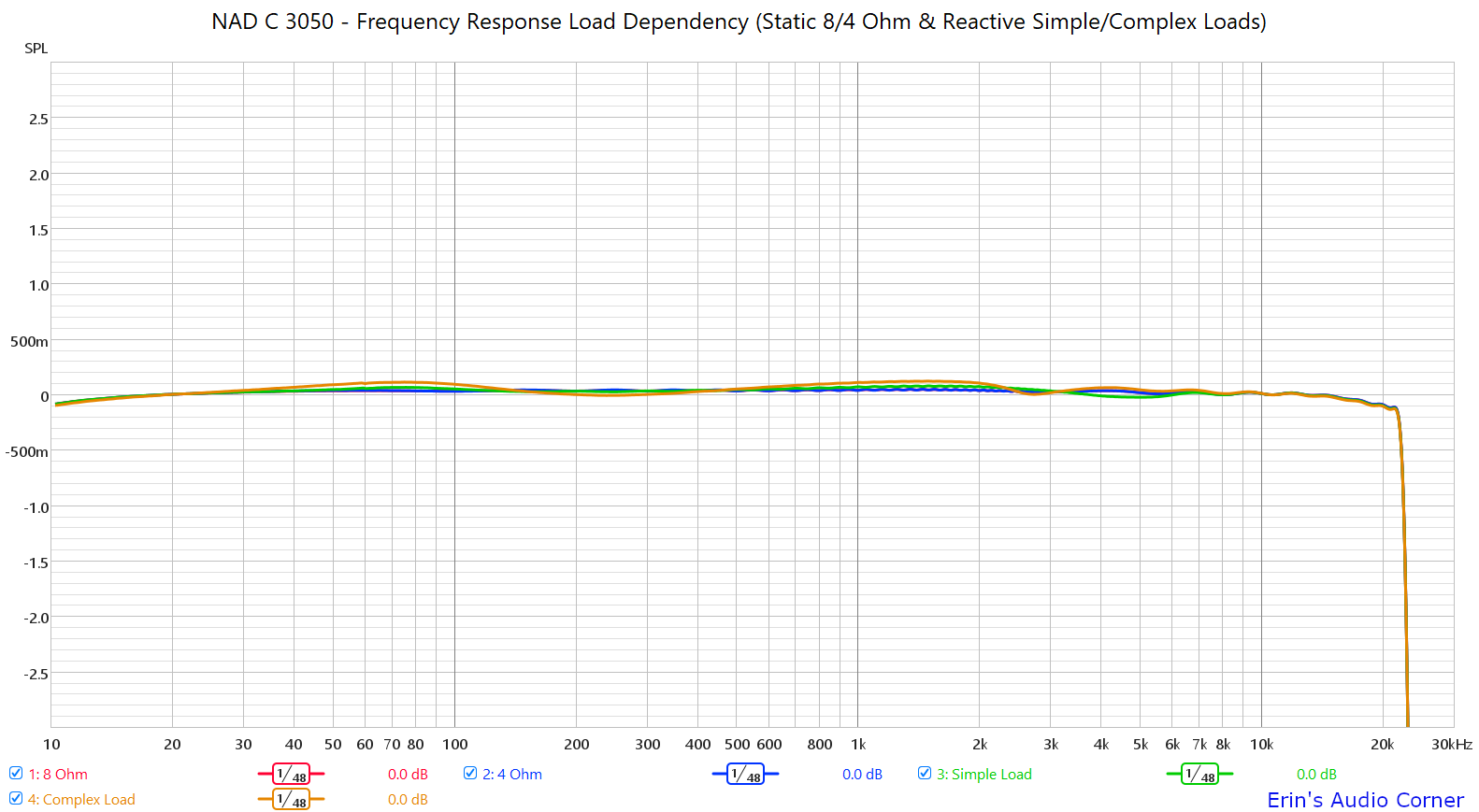
Subwoofer Crossover (200Hz shown). This crossover enables both a LPF on the subwoofer pre-out and a HPF for the speaker outputs.
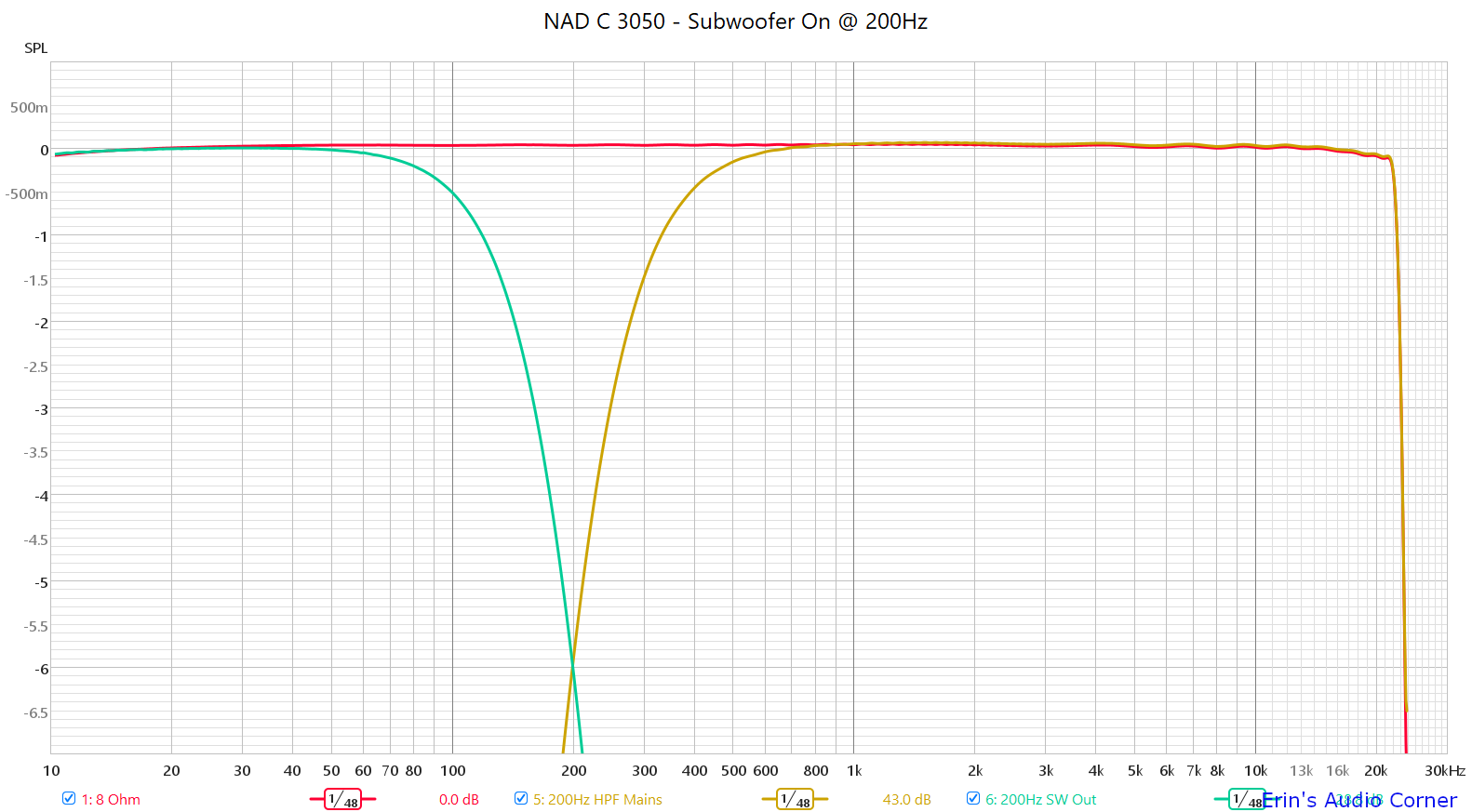
THD vs Power (1kHz)
The below graphic shows the THD as output level increases from left to right on the X-axis. I am showing only one channel here - which is the worst channel - for each load. This test is conducted wtih a 1kHz tone (as is standard).
Per the graphic below, max power at 0.10% THD is approximately:
- 125wpc @ 8 ohms
- 175wpc @ 4 ohms
- Subwoofer pre-out voltage is ~ 4.92 Vrms at max unclipped volume.
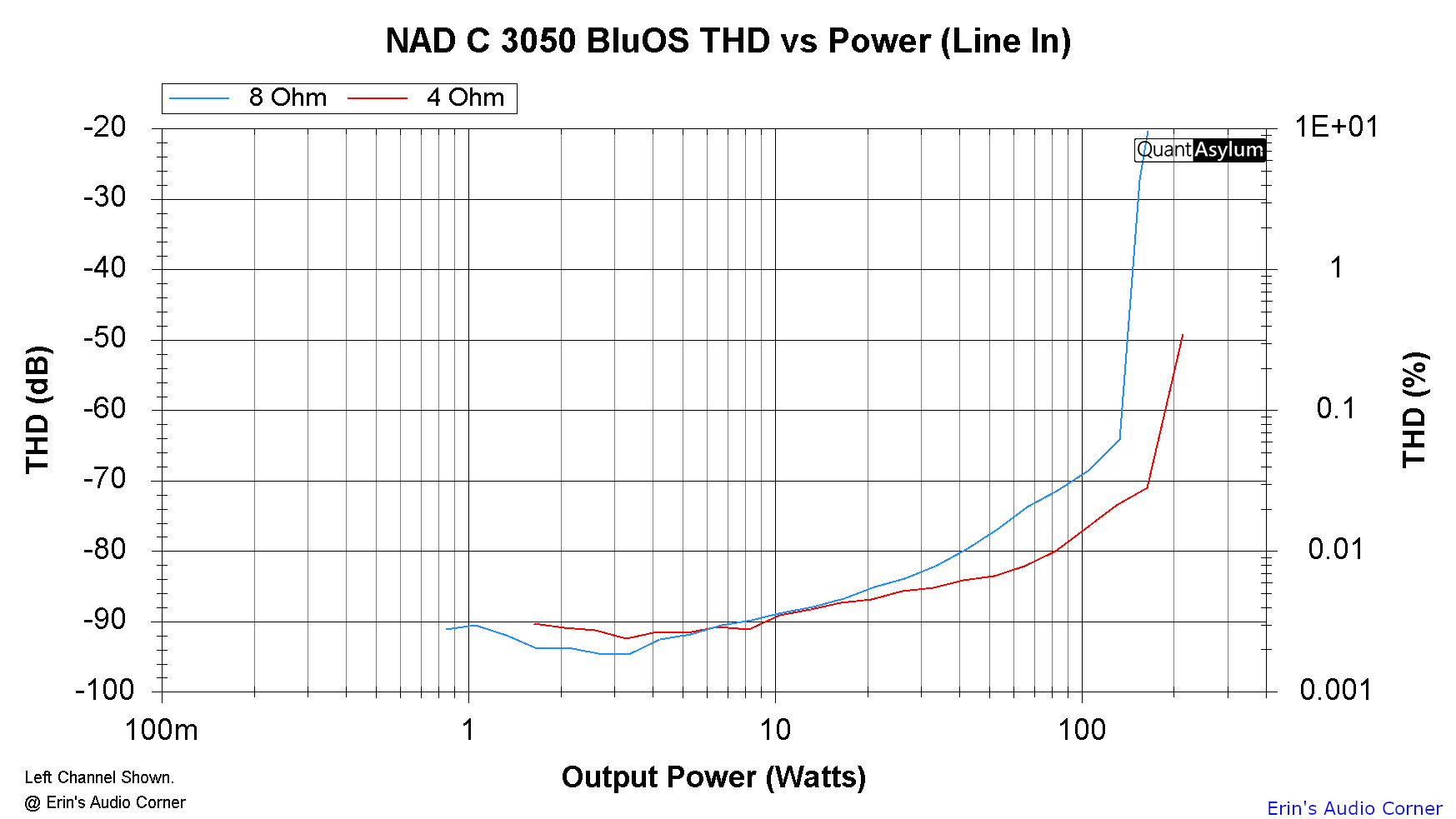
THD vs Frequency
The below graphic shows the THD as frequency increases from left to right on the X-axis. I am showing only one channel here - which is the worst channel - for each load. The highest drive level in this test corresponds to the manufacturer’s rated power.
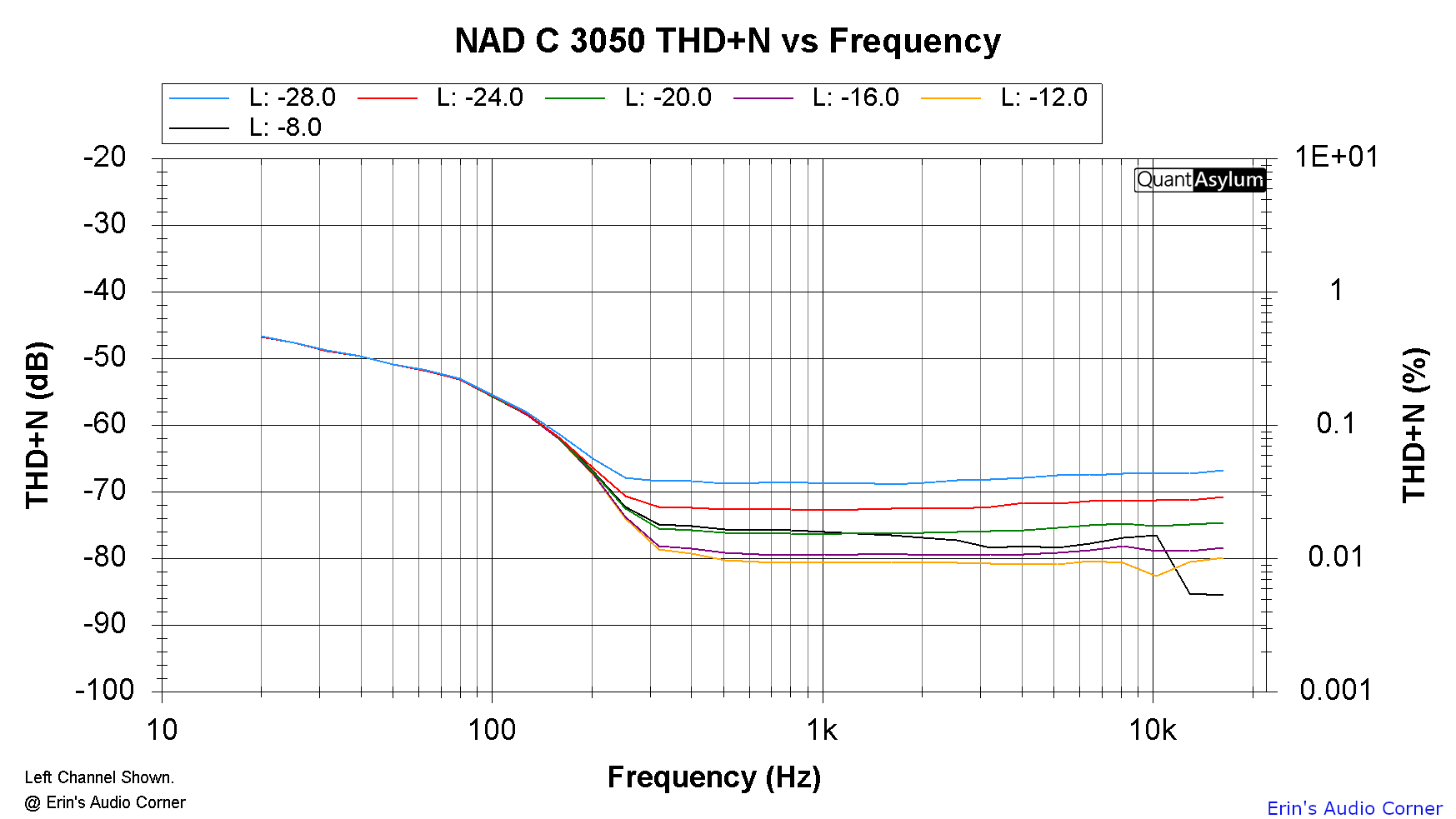
Power Degradation
The below section pertains to power capability at low volume vs high volume when two test signals are used: a) 1kHz tone and b) Multitone signal. I have provided 4 ohm only but 8 ohm shows similar results.
In an ideal world the power for the multitone signal is the same as the single 1kHz. Let’s verify.
1kHz, low power:
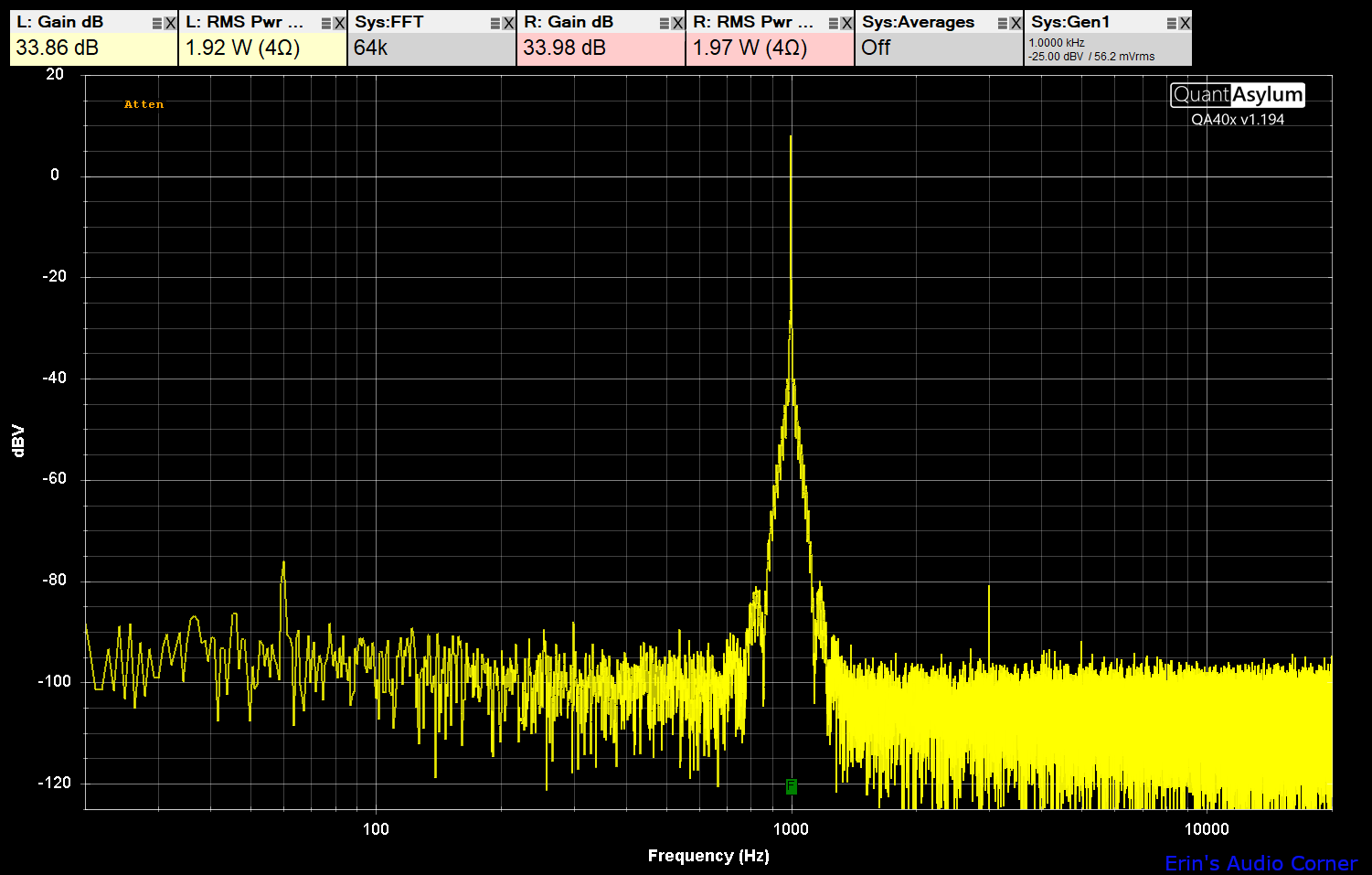
Multitone, low power:
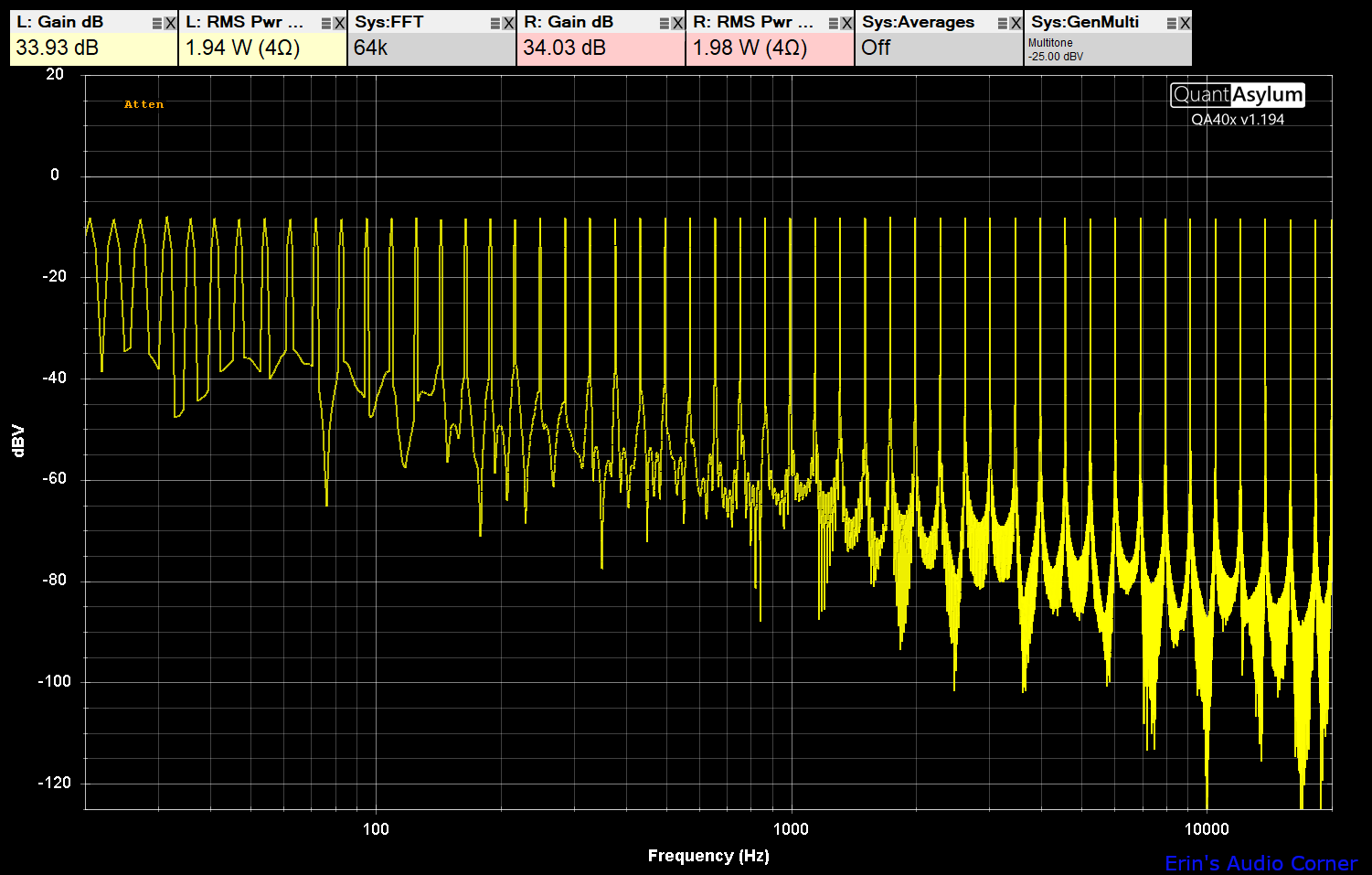
1kHz, rated power:
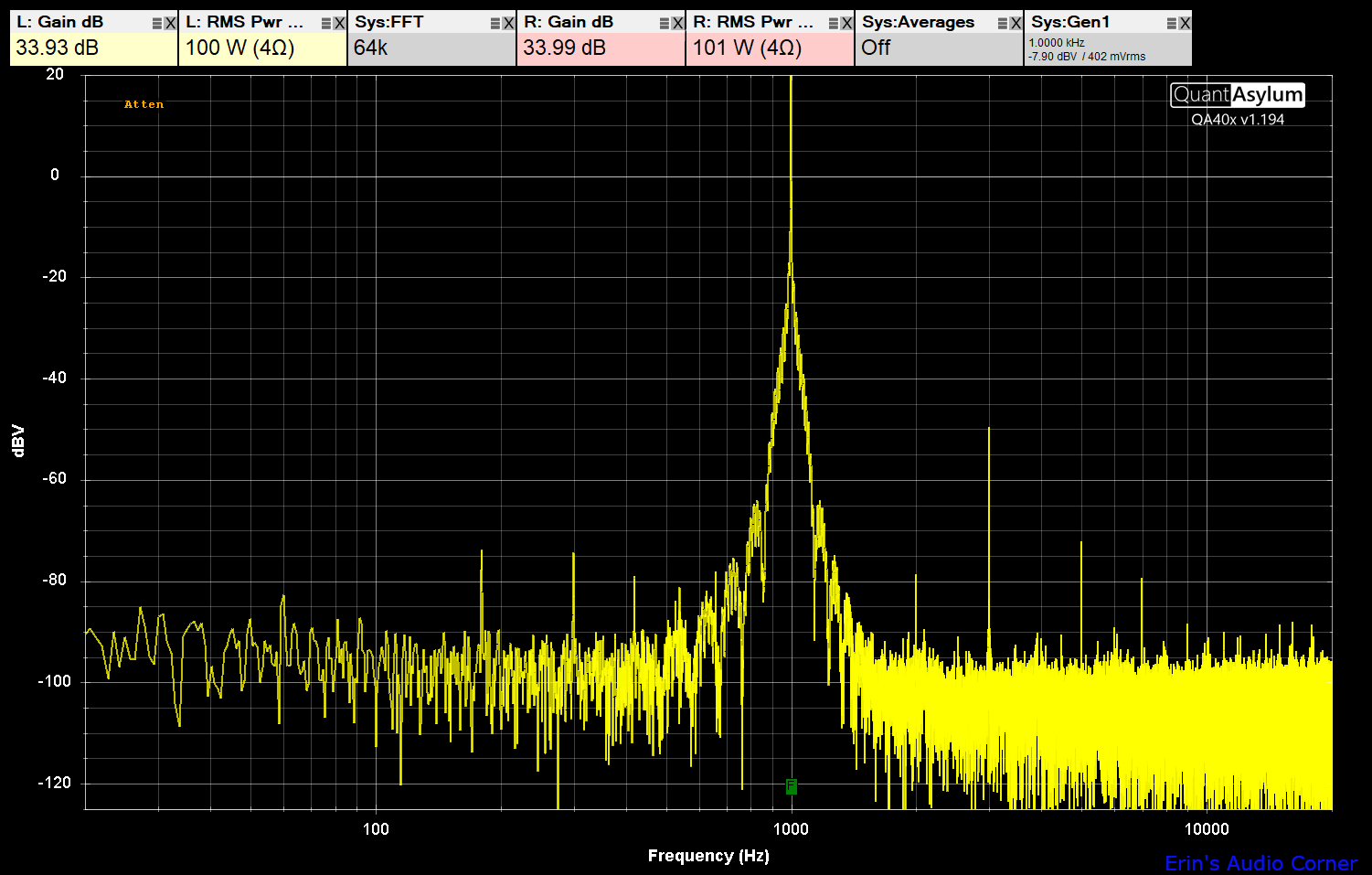
Multitone, rated power:
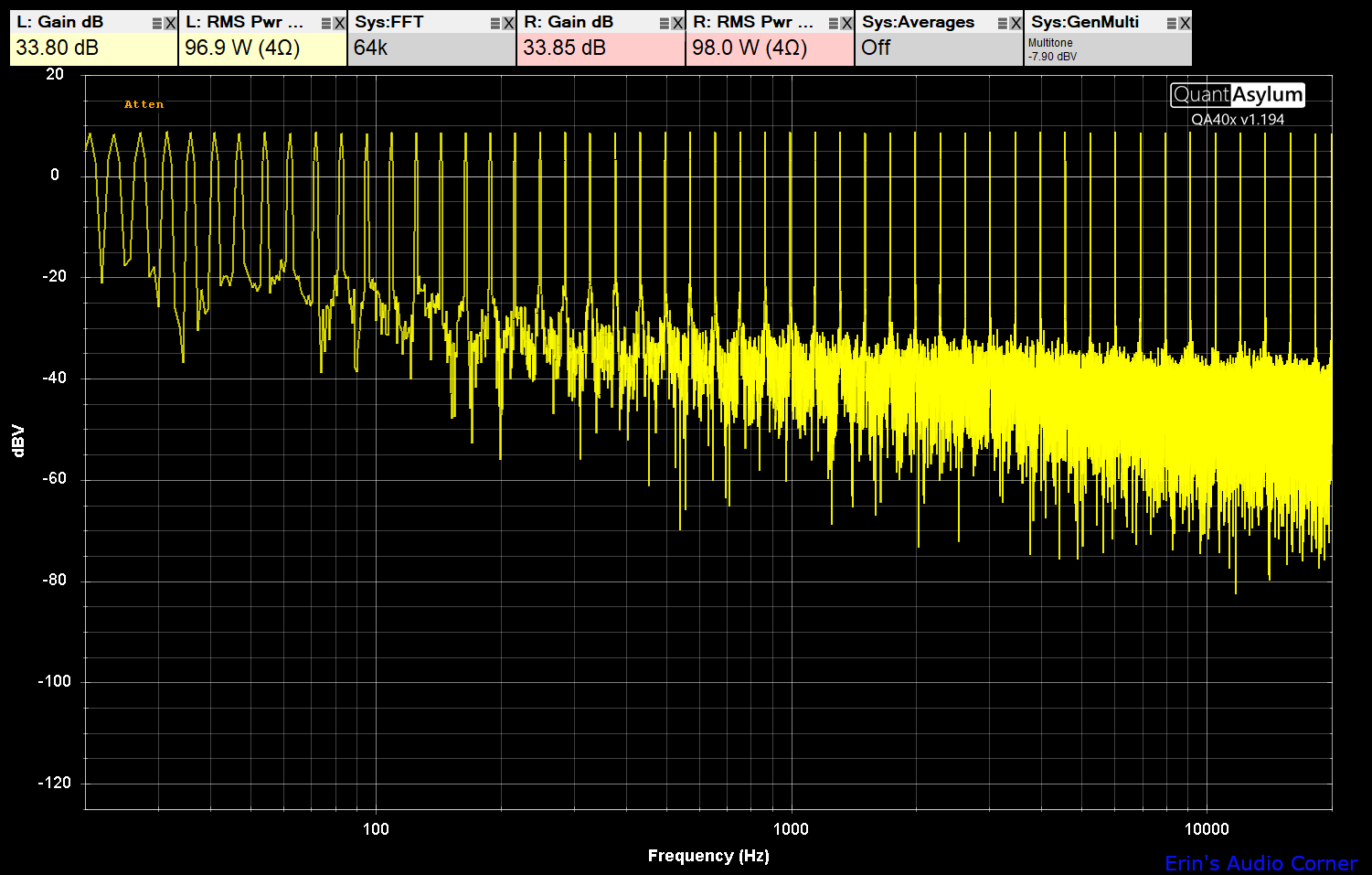
As we can see from the above, at low power the test signal used doesn’t change the output. At rated power there is approximately 3 watts of power loss with the multitone signal compared to the single 1kHz signal.
Output Impedance:
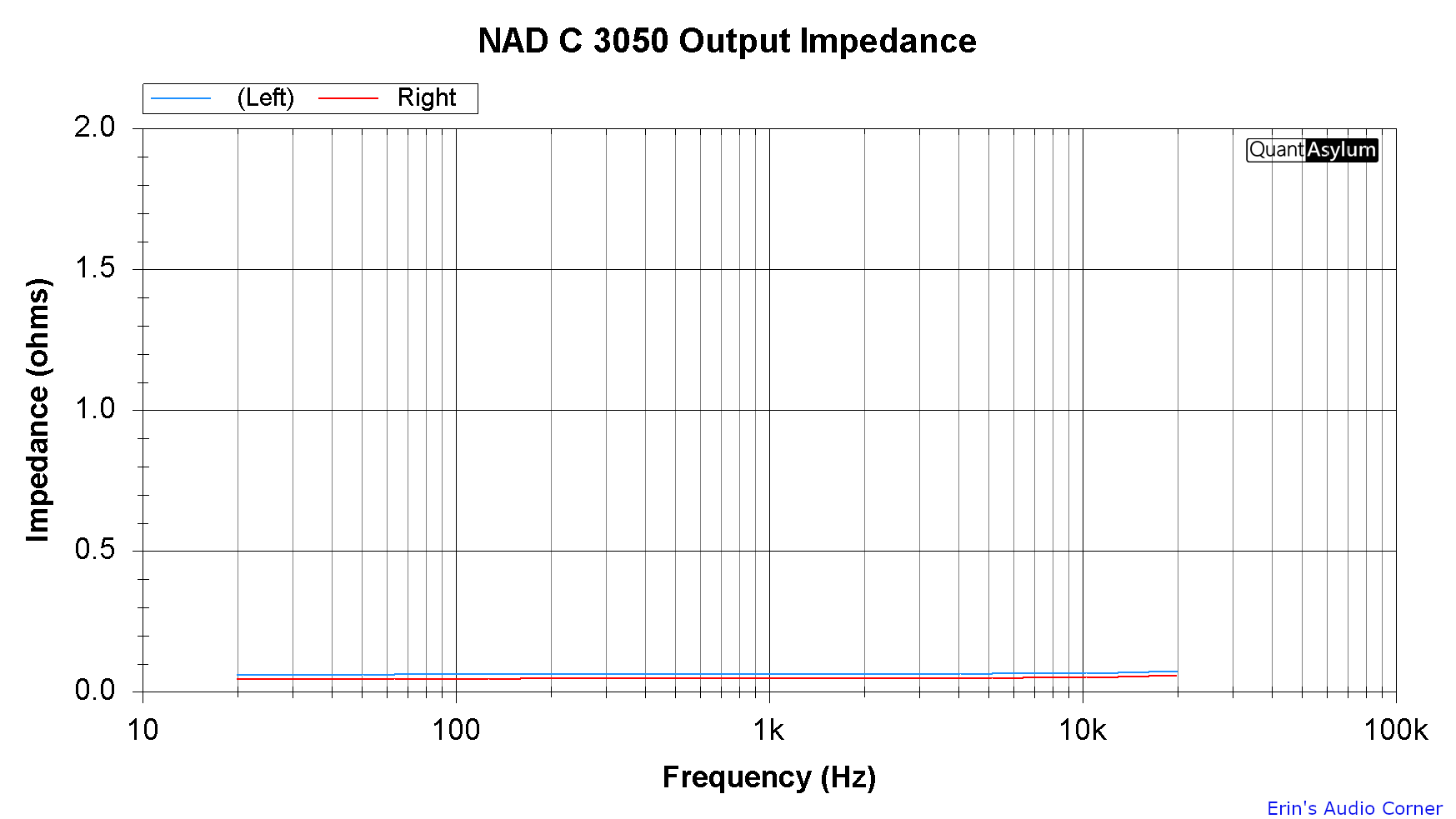
Parting / Random Thoughts
See video linked above for subjective and objective analysis. A summarized transcript is provided below:
The NAD C 3050 Integrated Amplifier is a modern retro unit that features streaming capabilities and Dirac Live functionality (though, limited to 20-500Hz). It has a classic aesthetic and offers various inputs and outputs, including HDMI ARC, RCA preouts and a subwoofer preout. It is a class D amplifier that provides enough power for standard sensitivity speakers with a resistance down to 4 ohm. The amplifier can be controlled through the BluOS app and offers adjustable bass and treble settings. Power rating is 100x2 @ 4 and 8 ohm and my results show this to be easily met with very low distortion.
Support / Contribute
If you find this review helpful and want to help support the cause that would be AWESOME! There are a few ways you can do so below. Your support helps me pay for new items to test, hardware, miscellaneous items needed for testing, new speakers to review and costs of the site’s server space and bandwidth. Any help is very much appreciated.
Join my Patreon: Become a Patron!
Shopping
If you want to help but can’t chip in directly and you are shopping at any of the following stores then please consider using my generic affiliate links below to make the purchase through.
Purchases through these links can earn me a small commission - at no additional cost to you - and help me continue to provide the community with free content and reviews. Doesn’t matter if it’s a TV from Crutchfield, budget speakers from Audio Advice or a pair of socks from Amazon, just use the link above before you make your purchase. Thank you!
